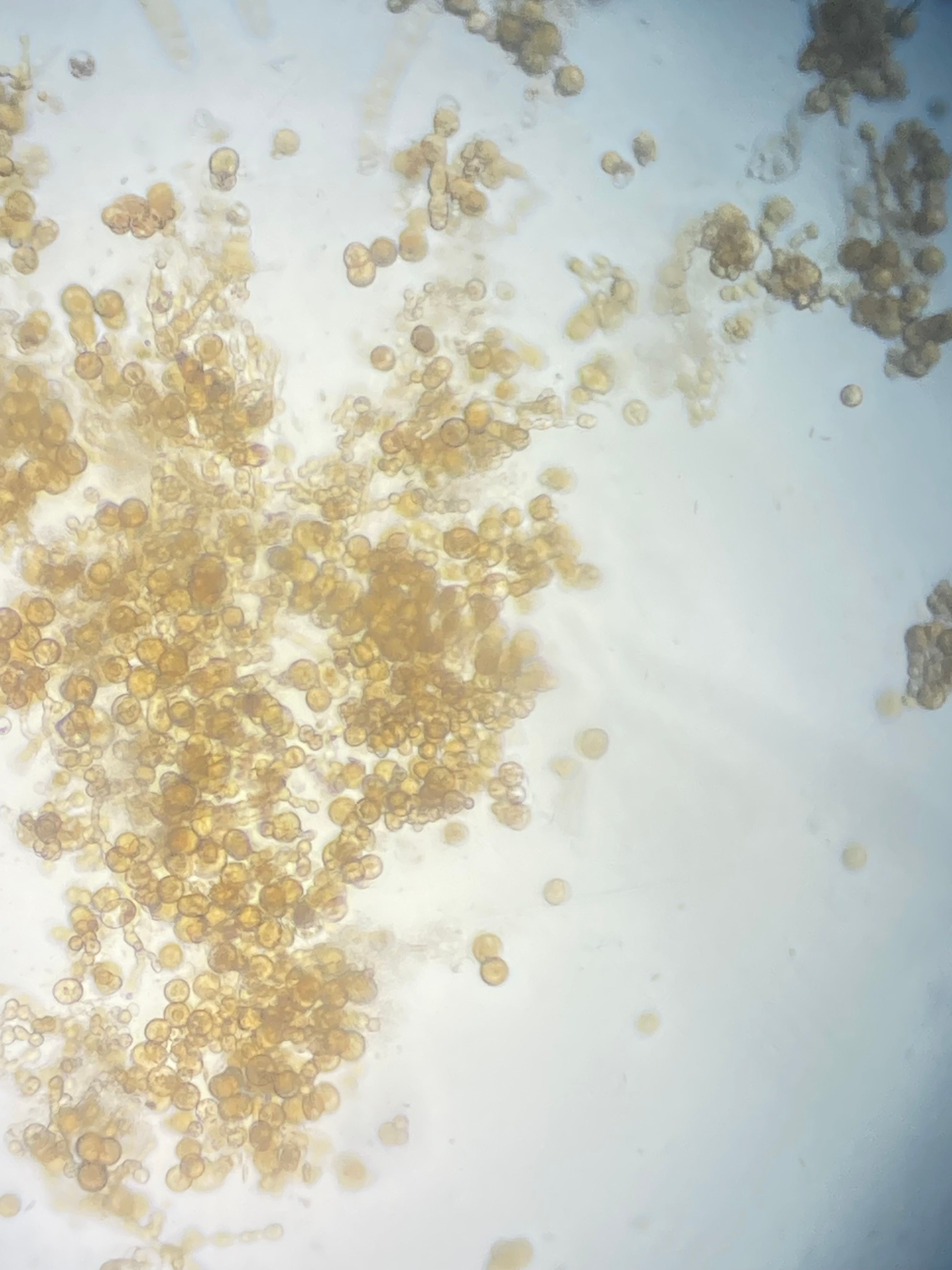Possible Gametophyte phaoevirus
-
I was wondering if anyone has experience with phaoevirus in their gametophyte cultures, or could help me identify why my female gametophyte cells are spherical and enlarged?
I would like to use these cells this season, even experimentally, to see if they reproduce and grow. I’m hoping someone here has experience with this.


@elizabeth_savage19 We haven't seen those, but Dr. Yarish shared the attached papers which might give some insights. Murua et al.2024.The FirstPhycopathologicalAtlastInLatinAmericaUnveilsTheUnderdocumentaionOfAlgalPathogens4-19-21Kelp Pathogen Has Spread Across the Southern Ocean _ The Scientist Magazine Dekker et al2024. RNA Viruses in Saccharina and Alaria (Dutch)Schroeder et al.2023.Phaeoviruses found in recovering Nereocystis luetkeana kelp forest communityChoi et al.2024.Comparative_Metagenomic_Analysis_of_Marine_eDNA_InSaccharina_japonica
Dekker et al2024. RNA Viruses in Saccharina and Alaria (Dutch)Schroeder et al.2023.Phaeoviruses found in recovering Nereocystis luetkeana kelp forest communityChoi et al.2024.Comparative_Metagenomic_Analysis_of_Marine_eDNA_InSaccharina_japonica
@toby_sheppardbloch
excellent resources, thank you. Anyone running a kelp nursery needs to befriend a lab who can test their spools during good and bad times, documenting microbial communities during successes and failures. This need for monitoring should continue out to the farm or restoration site, as costly as it is.
@leeann_ennis Do you have suggestions of what should be tested for? In the past when we have seen unknown bacterial blooms and reached out regarding testing them labs have said they don't have a goto panel to run and best suggestion is to culture in agar then do a DNA analysis. In addition to being expensive we were worried this approach would be too slow to be actionable as a nursery operator.
@toby_sheppardbloch I cannot answer your question, the person to ask would be @siobhan_schenk256 who has posted on this forum previously with an informative survey for nursery operators. Collaborating with local universities and finding a microbiologist grad student is a good place to start. Always feed two birds with one scone
@toby_sheppardbloch
excellent resources, thank you. Anyone running a kelp nursery needs to befriend a lab who can test their spools during good and bad times, documenting microbial communities during successes and failures. This need for monitoring should continue out to the farm or restoration site, as costly as it is.
@leeann_ennis Do you have suggestions of what should be tested for? In the past when we have seen unknown bacterial blooms and reached out regarding testing them labs have said they don't have a goto panel to run and best suggestion is to culture in agar then do a DNA analysis. In addition to being expensive we were worried this approach would be too slow to be actionable as a nursery operator.
@toby_sheppardbloch I cannot answer your question, the person to ask would be @siobhan_schenk256 who has posted on this forum previously with an informative survey for nursery operators. Collaborating with local universities and finding a microbiologist grad student is a good place to start. Always feed two birds with one scone
Hi @elizabeth_savage19 and thanks @leeann_ennis for tagging me in this!
I unfortunately have not seen this before, so I think the papers suggested by @toby_sheppardbloch are a good place to start. I will share this post with the other algae people at UBC to see if they know more than I do.
I am very interested in disease, so depending where you are located I would love to get a sample! I'm sure many labs would feel the same. Academics are usually hoping to do something relevant to the boarder community, so finding collaborator to tell you what is in your cultures should be possible.
In terms of testing, there are two main molecular approaches we can use:
Please let me know if I can clarify anything else and if you are near(ish) Vancouver BC and are willing to give the Parfrey lab at UBC some samples! If you are far away I can suggest some labs that have the expertise you are looking for that are close by.